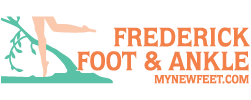Dr. Steinberg and Dr. Yanes welcomed Jackie Chen into their practice and we are eager to share with her all our knowledge on podiatry. From pediatrics to geriatrics, from the weekend warriors to the seasoned marathoners, we worked endlessly in the office to help our patients to the best of our ability. This is where Jackie fell in love with the challenges of podiatry, and it was after working at Frederick Foot & Ankle last year that she made the decision to apply for Podiatry School.
The interview process was nerve wrecking and the travel was stressful. However, after arriving in Philadelphia for Temple University of Podiatric Medicine class of 2015 orientation, Jackie knew podiatry school was the perfect career path for her.
Her first and second year were intense. Mostly due to the class load, there were many late night adventures in the library memorizing lower extremity anatomy, pharmacology, and microbiology, followed by many early morning study sessions in the cadaver labs. The third and fourth year was demanding in a different way, the pressure was on to not only impressing your professors by exam scores, but to astound them with your clinical skills and patient interactions.
But in the end, the long tortuous road to Podiatry School graduation was well worth the effort. At the graduation ceremony in, Philadelphia, PA Jackie had both Dr. Steinberg and Dr. Yanes hood her on stage after receiving her diploma. Being hooded signified the success of completing the program at Temple University School of Podiatric Medicine and officially becoming Dr. Jacqueline Chen, Doctor of Podiatric Medicine (D.P.M.)!
It feels like it was just yesterday when Jackie first started working at Frederick Foot & Ankle and now she has finished school. Now she is ready to sembark on a new chapter in her life with a 3 year podiatric surgical residency in Philadelphia. Maybe we will see her back at FFA in another 3 years! Feel free to come and visit us before then at either of our offices located in Urbana, MD or Frederick, MD!
By Coralia Terol
